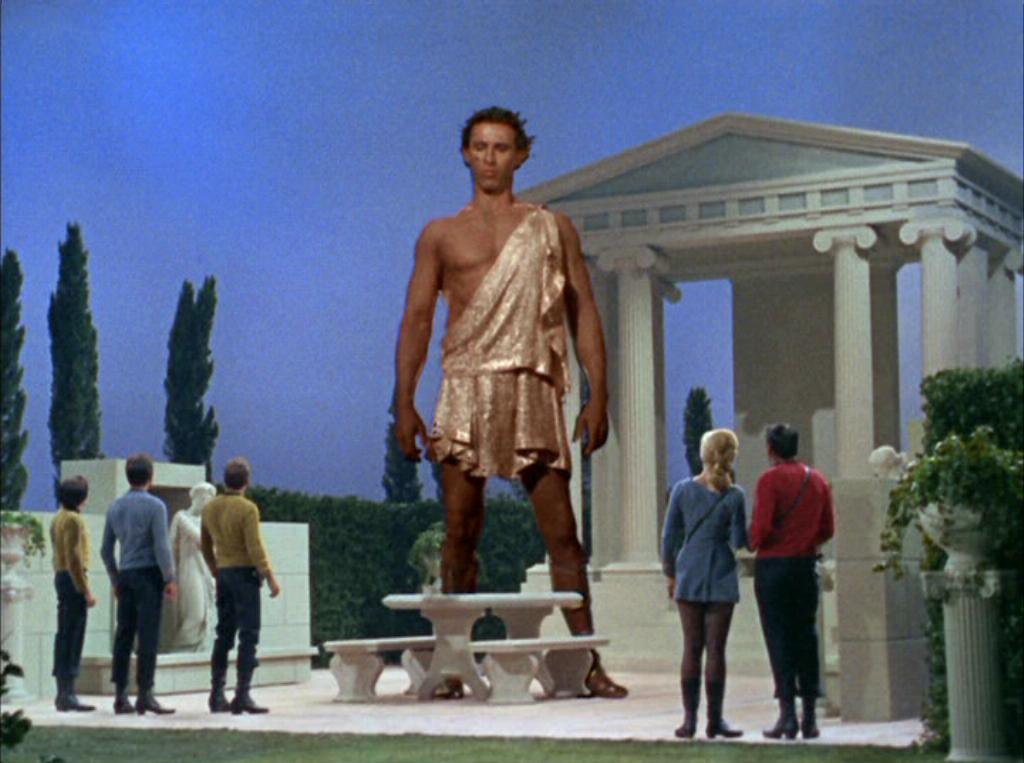Our 5e Land of Azurth campaign continued last night, with the party climbing the stairs to the next level, despite the madness-inducing noise. (Their plan of using Silence proved to be unwieldy.) They all stuffed wax in their ears (except the frogling that has no external ears to put wax in!). Shade was the first up. She found a room full of automata pieces with a whole in the ceiling and bodies of birds beneath it. Beyond that room was an iris-type door.
After retrieving the rest of the party (most of whom made their saves, and the one's that didn't were only minorly impaired), they opened the door. Inside they found a circular shaft with an obelisk, skirted with a platform floating inside. Leading to it was a climbing, arcing path of floating discs, each separated by about 5 feet. Interestingly, the dread noise seemed absent from the shaft--but no other spells worked, either.
Waylon the Frogling was made for leaping, so he was chosen to jump from disk to disk to reach the obelisk and platform. There, he discovered another brass mechanical face. The face explained it was the guardian of the obelisk's treasure, which certainly got Waylon's interesting. It initially was reluctant to reveal the treasure but Kully the Bard connived the head into doing it, though he strongly warned them any attempt to tamper with it would lead to the collapse of the floating obelisk and the release of the "criminal" fire elemental, leading to everyone's death.
Within a milky, glass sphere and festooned with wires, Waylon found a book called
The Wondrous Wizard of Azurth, with a drawing of a smiling, benevolent old man on the cover. The book was dangerous, he was told, because it was an anomaly. Not heresy per se (as Dagmar though), but perhaps heresy against the nature of reality. The book was somehow related to the Clockwork Princess' madness. It's author is listed as O. March Loam (which brought to mind Mirabilis Lum for the player's), but the guardian suggests this was the actual identity of the author who is a "thought form" of some other being, a being with name such "fragments."
Despite Waylon's desire to look for other treasure, the party is more eager now than ever to seek out the princess. On the next level of the castle, they find her. Her face, frozen in horror or madness, is on a great tree like shape of brass and iron, gears and wires. It's wire and conduit canopy spreads out across the ceiling, and his root-like tendrils radiate out along the floor.
There is a shadow, think as velvet, along the ceiling, that slowly brings itself together like a snake coiling for a strike. The party doesn't notice at first. When the shadow has become a whispy sphere, and triangular eyes open in its void like malevolent stars, they do take notice! It tells them it has waited so long for someone to kill so it can be released from this prison of cold light and return to the embrace of the dark void.
Then it nearly kills half the party with a blast of necrotic damage.
The party flees to heal and regroup. Dagmar's knowledge of the arcane suggests it's a aberration from the Outer Dark, which hates light. The party them remembers they are in possession of energy weapons they do
radiant damage. Gearing out with Haste spells, Light, and of course those energy guns, they return the challenge the creature.
Though still a fearsome foe, it is perhaps overconfident from its last victory and they catch it off guard. It doesn't long survive what is practically artillery fire of laser beams form Hasted gunmen.
They now have the Princess to confront.
TO BE CONTINUED.



















